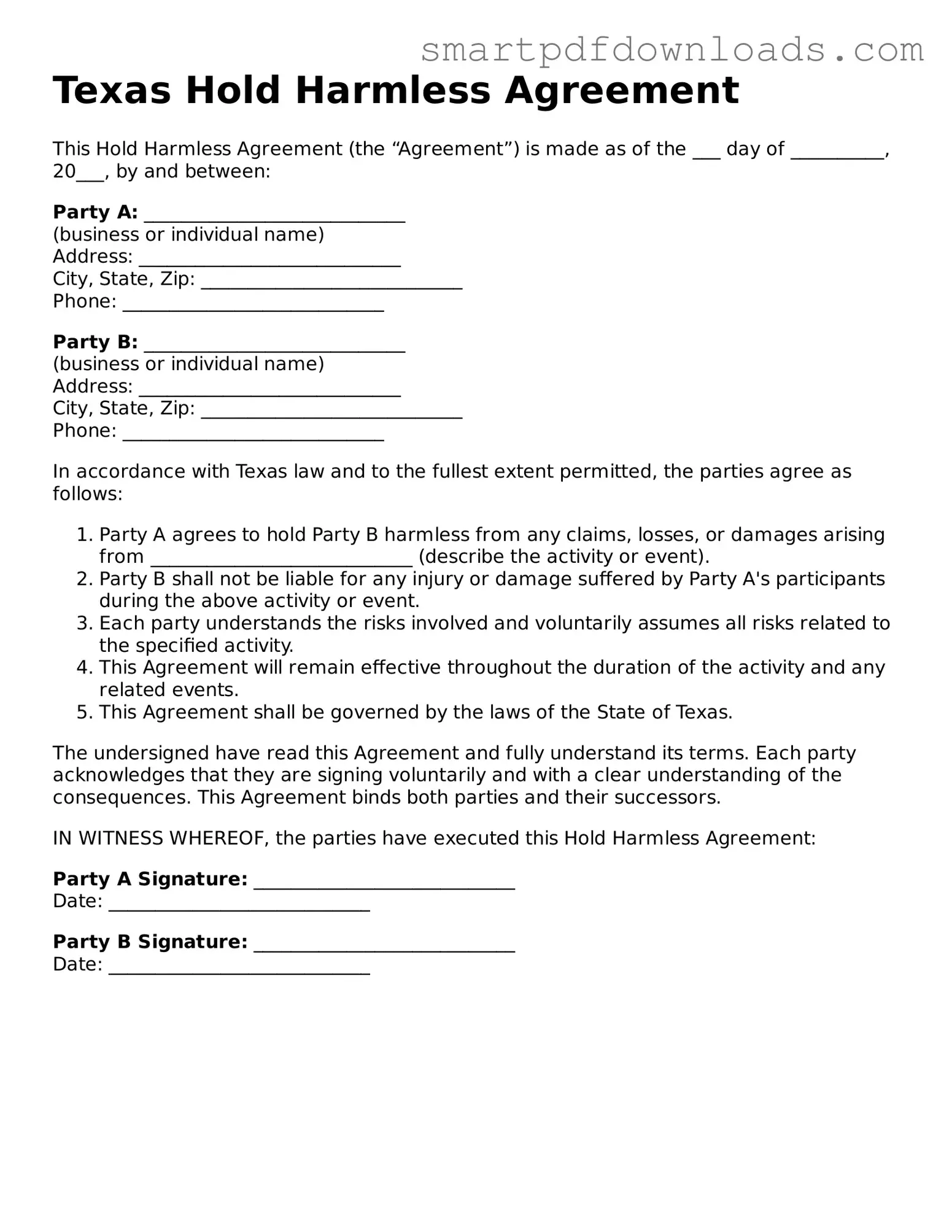Texas Hold Harmless Agreement
This Hold Harmless Agreement (the “Agreement”) is made as of the ___ day of __________, 20___, by and between:
Party A: ____________________________
(business or individual name)
Address: ____________________________
City, State, Zip: ____________________________
Phone: ____________________________
Party B: ____________________________
(business or individual name)
Address: ____________________________
City, State, Zip: ____________________________
Phone: ____________________________
In accordance with Texas law and to the fullest extent permitted, the parties agree as follows:
- Party A agrees to hold Party B harmless from any claims, losses, or damages arising from ____________________________ (describe the activity or event).
- Party B shall not be liable for any injury or damage suffered by Party A's participants during the above activity or event.
- Each party understands the risks involved and voluntarily assumes all risks related to the specified activity.
- This Agreement will remain effective throughout the duration of the activity and any related events.
- This Agreement shall be governed by the laws of the State of Texas.
The undersigned have read this Agreement and fully understand its terms. Each party acknowledges that they are signing voluntarily and with a clear understanding of the consequences. This Agreement binds both parties and their successors.
IN WITNESS WHEREOF, the parties have executed this Hold Harmless Agreement:
Party A Signature: ____________________________
Date: ____________________________
Party B Signature: ____________________________
Date: ____________________________
